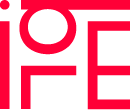At ibLE, our Virtual Assistants come from all kinds of backgrounds – from corporate offices to creative studios and everything in between. This month, we caught up with one of our experienced VAs to talk about building trust remotely, balancing flexibility with structure, and what it really takes to become a high-value assistant in today’s world of hybrid work.
Can you tell us a bit about yourself and what led you to become a virtual assistant?
After COVID, I moved back up north to Manchester and the Lake District, leaving London. My partner and I took on a huge renovation of a 400-year-old house in the Lakes, and to make it work, I started freelancing as a virtual assistant while managing the project. From there, my client base grew, and I realised how much I not only loved the flexibility but also the scope of work that it offered and the variety of people I got to work with.
How do you build strong working relationships with clients you’ve never met in person?
It starts with really listening and understanding how your client works. You’re there to make their life easier, so flexibility in your approach and clear communication are key. I make time for regular calls, especially early on, and if possible, meet in person at least once. I’ve found emotional intelligence also really matters as tone can get lost online, so it’s important not to take things personally and to read the situation.
What do you think makes you a senior, high-value EA?
No job is too small. Even when working on strategy or big projects, I stay grounded and ready to help with whatever’s needed. Every assistant role is unique to the person you’re supporting, and your willingness to pivot and be flexibile is everything. It’s about having an attitude which allows you to be proactive and adaptable, which signals to your boss that you’re genuinely invested in helping their life/work run more smoothly.
What’s a tool or piece of software you couldn’t live without?
AI tools have become essential for working efficiently. I use them to streamline, not replace, my work – like dictating into ChatGPT instead of typing everything out. It keeps things flowing and saves time. On the other end of the spectrum, I still love my handwritten diary, it keeps me organised in a more traditional way.
If you could give new clients one piece of advice for working effectively with a VA, what would it be?
Take time at the start to get to know your VA so you understand how they work as well. It is a two-way relationship after all. You’re trusting them with key parts of your business, so clear communication is everything. Set expectations early including hours, ways of working, so you’re both aligned. And carve out time where they can come to you with questions in the first few weeks. That structure creates a foundation of trust and sets everything up to run smoothly long term.
Natasha’s journey is a brilliant reminder that being a great VA isn’t just about organisation — it’s about emotional intelligence, adaptability, and genuinely caring about the people you support. From building trust with clients she’s never met to blending AI with traditional tools, her story shows how flexible work can be both meaningful and high-impact.
Whether you’re thinking about working with a VA or becoming one, Natasha’s experience highlights a simple truth: the best partnerships are built on trust, clear communication, and the willingness to grow together.
